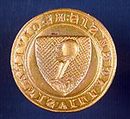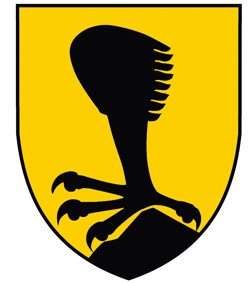Extract from the history of the city steeped in tradition
The earliest traces of human activity in the Villach area date back to the late Neolithic Period (3500–1800 B.C.). All subsequent prehistoric eras are represented in this naturally favourable landscape with some very important discovery sites. Many finds in the urban area data back to the Roman times (after 15 B.C.). The name of the presumed road station here is Santicum. The remains of the ancient civilisation ceased to exist with the influx of Slavic tribes around 600.
The Roman road near Warmbad Villach, an ancient track cut into rock, is one of the most important historic routes leading from Italy to the East Alpine region. It was first travelled in prehistoric times and was still being used in the post-Roman era. Roman dedicatory inscriptions from Warmbad indicate the early use of the thermal springs there.
In 740 came Carantania under the supremacy of the Duchy of Bavaria. As part of Christian missionary activity, Emperor Charles the Great identified the River Drava as the diocesan border between Salzburg and Aquileia. In 878 King Karlmann handed over the royal court of Treffen to the Bavarian monastery of Ötting. The Villach bridge is mentioned in documents as being a border point.
In 979 Emperor Otto II enfeoffed the royal court of Villach to Bishop Albuin of Säben/Brixen. The fortification with a church was probably located in St. Martin. In 1007 the Villach area became the property of the diocese of Bamberg, founded by Emperor Henry II, and remained under its ownership until 1759. A comprehensive market charter was granted to the settlement around the bridge in 1060, as part of this King Henry IV gave the diocese immunity and the right to hold court, exact tolls, mint money and hold markets. Furthermore, Emperor Frederick II authorised an annual market in 1225.
Villach was explicitly identified as a town for the first time in 1240, and it was the most significant in the country in the late Middle Ages. It was presided over by town judges, who were known of since 1240. The oldest surviving town charter dates back to 1392. From 1588 onwards there have also been mayors in addition to town judges, and they quickly assumed a more important role. On 25 January 1348 Villach was destroyed by a major earthquake; another quake in 1690 also caused a great deal of damage. The town was damaged by fires on several occasions, e.g. in 1524, 1606, 1713 and 1813.
In 1526 the Reformation penetrated Villach; it was centre of Protestantism in Carinthia. After 1600, citizens who adhered to Lutheranism were forced to emigrate, something which accelerated the economic decline of the town. The view of the 1649 topography of Austria by Matthäus Merian shows the characteristic position of Villach with the town centre to the south of the Drava; evidence of a bridge crossing here is documented as far back as 878. Between 1007 and 1759 the town was in the possession of the diocese of Bamberg. At the time of this illustration, Villach had fewer than 3000 inhabitants.
In 1535 the Prince-Bishopric of Bamberg was forced to recognise the subordination of its possessions to the sovereign authority of the country, further sovereign rights were lost in 1674. Empress Maria Theresa finally acquired Villach by purchase together with all other Bamberg possessions in Carinthia for Austria in 1759.
During the Napoleonic era, Upper Carinthia was separated from Austria, and between 1809 and 1813 Villach was the main town of the region within the French provinces of Illyria.
The town suffered terrible damaged when it was reconquered in the summer of 1813. Around 1810 the mediaeval town fortification was abandoned, and the citizens’ guard was dissolved in 1852 as the last remnant of the former town defence organisation.
New legal reforms in 1849, 1861 and 1864 increased the sphere of influence of the town community. In 1864 the southern railway in Austria reached Villach, and the important railway junction developed shortly afterwards benefited the recent upswing in the town. As a town near the from with Italy, Villach was the seat of the headquarters of the 10th Army during the war years of 1915–1917. Villach became an autonomous municipal authority with its own statute on 1 January 1932, and assumed the tasks of regional administration.
The town was hit hard in by 52 air attacks in 1944/45 during World War 2 – around 300 people were killed and 1300 buildings were destroyed or badly damaged.
With part of the community of St. Martin having become part of Villach in 1905, Landskron, Fellach and Maria Gail were also incorporated into the community in 1973.
The City of Villach covers 134.85 km². The city reached 60,000 inhabitants in 2013, 65,000 in 2023.
Municipal coat of arms and town seal
A document dating back to 1240 in the Austrian State Archives contains the earliest evidence of the seal and coat of arms of Villach. It is also the oldest evidence of a seal out of all the Austrian cities. This seal displayed the foot of an eagle with open claws and the Latin transcription Sigillum civitatis villacensis (seal of the town of Villach).

The original from sealing wax is only partly preserved today, but there are good reproductions of it. The earliest seal stamp is magnificent (it is also the oldest that has been preserved in all Austrian cities), a gold-plated crest from around 1270 that is stored in the city museum. It displays the eagle’s foot on a crag in a form that is binding in the applicable municipal law for the coat of arms.
There is no clear clarification of origin or an old legend about the coat of arms and its colours, but it is highly likely that the clawed foot stems from the eagle in the family coat of arms of the Bamberg bishop Ekbert von Andechs – a particularly important lord of Villach who presided over the diocese and his expansive Carinthian territory under his supremacy between 1203 and 1237.

Colours of the coat of arms and town flag
The colours of the Villach coat of arms and those of the town flag are yellow (or gold) and black. This traditional coat of arms and the flag were defined as legally binding in the municipal law in 1965 (and in all subsequent versions), and the presentation of the coat of arms to deserving institutions was also revised at this time.
The earliest evidence that the conduct had carried out such a thing dates back to 1899 when the Warmbad baths were permitted to bear the city coat of arms, and to 1900 when the Fischer Brewery (which is now the Villach Brewery) received authorisation to bear the municipal coat of arms.